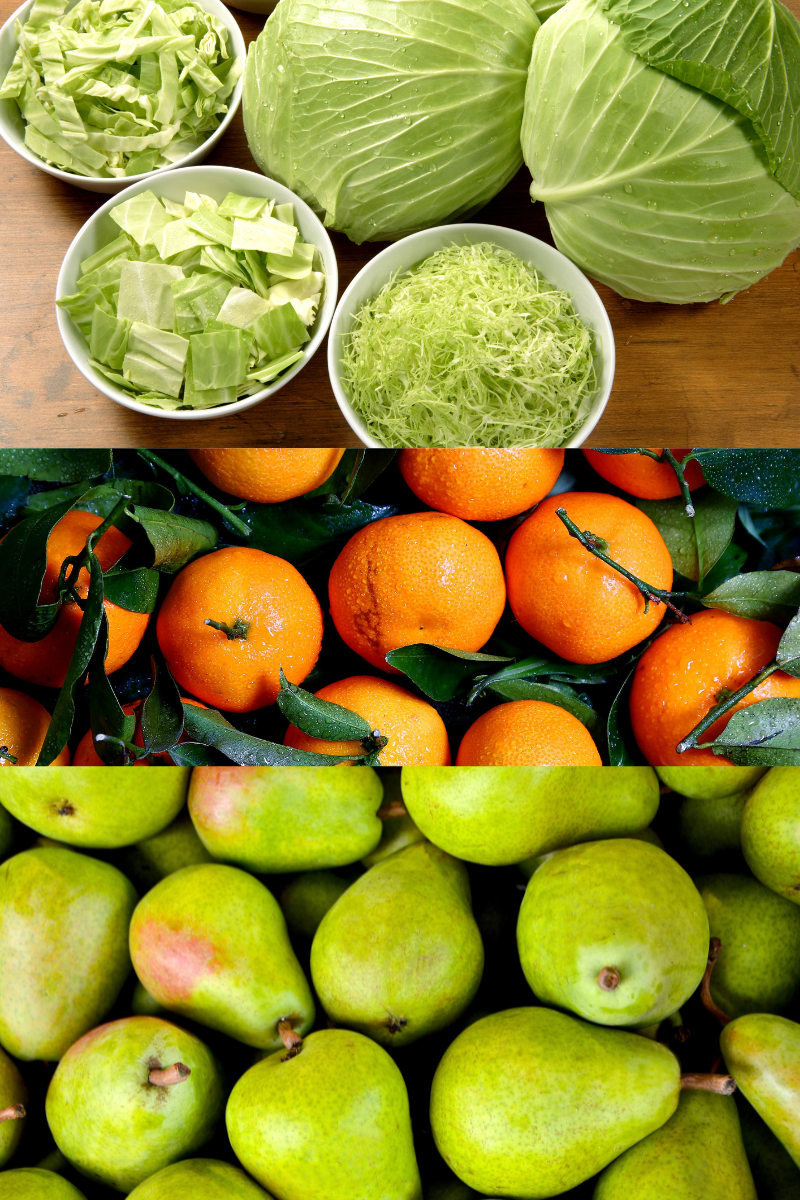
Does your New Year’s resolution include eating more fruits and vegetables? Produce has many health benefits but unfortunately, most people are not meeting the recommended five servings of fruits and veggies each day. In fact, research has found that, “just 1 in 10 adults meet the federal fruit or vegetable recommendations.” Not only are fruits and vegetables delicious but having a balanced diet that includes a variety of fruits and vegetables may reduce the risk of heart disease, stroke, and certain cancers.
Fruits and vegetables can be enjoyed all year round. Winter offers a variety of in=-season fruits and veggies including apples, bananas, carrots, celery, collard greens, cabbage, pears, oranges, winter squash, etc. In-season fruits and vegetables are usually more affordable and make great additions to meals and snacks.
Winter Produce Highlights
Cabbage
- Choose cabbages that are firm with crisp leaves.
- Use cabbage in salads, soups, or sauté in olive or canola oil with onions.
- One cup of shredded cabbage only has 20 calories and is an excellent source of Vitamin C and Vitamin K.
- Try this unstuffed cabbage soup recipe for a nutritious meal.
Pears
- A medium pear has about 100 calories and six grams of fiber.
- Pears are also a good source of Vitamin C, which helps support the immune system.
- Add pears to a salad or oatmeal for extra fiber.
- Choose firm pears while grocery shopping. If the pear gives in to slight pressure, then it is ripe. Refrigerate ripe pears. Leave pears on the countertop to ripen.
- Try this baked pear dessert recipe for a sweet treat.
Oranges
- Oranges are a good source of fiber and Vitamin C.
- Grab an orange for a quick snack or have it with a meal.
- Limit 100% juice to 8 fluid ounces each day. It’s better to eat a piece of fruit (oranges and apples) than juice. Juice does not contain fiber.
Written by BWS Dietitian-Melissa Morningstar Vajas RD, LD
Continue reading January 2023 Newsletter: Top Fitness Apps for 2023
